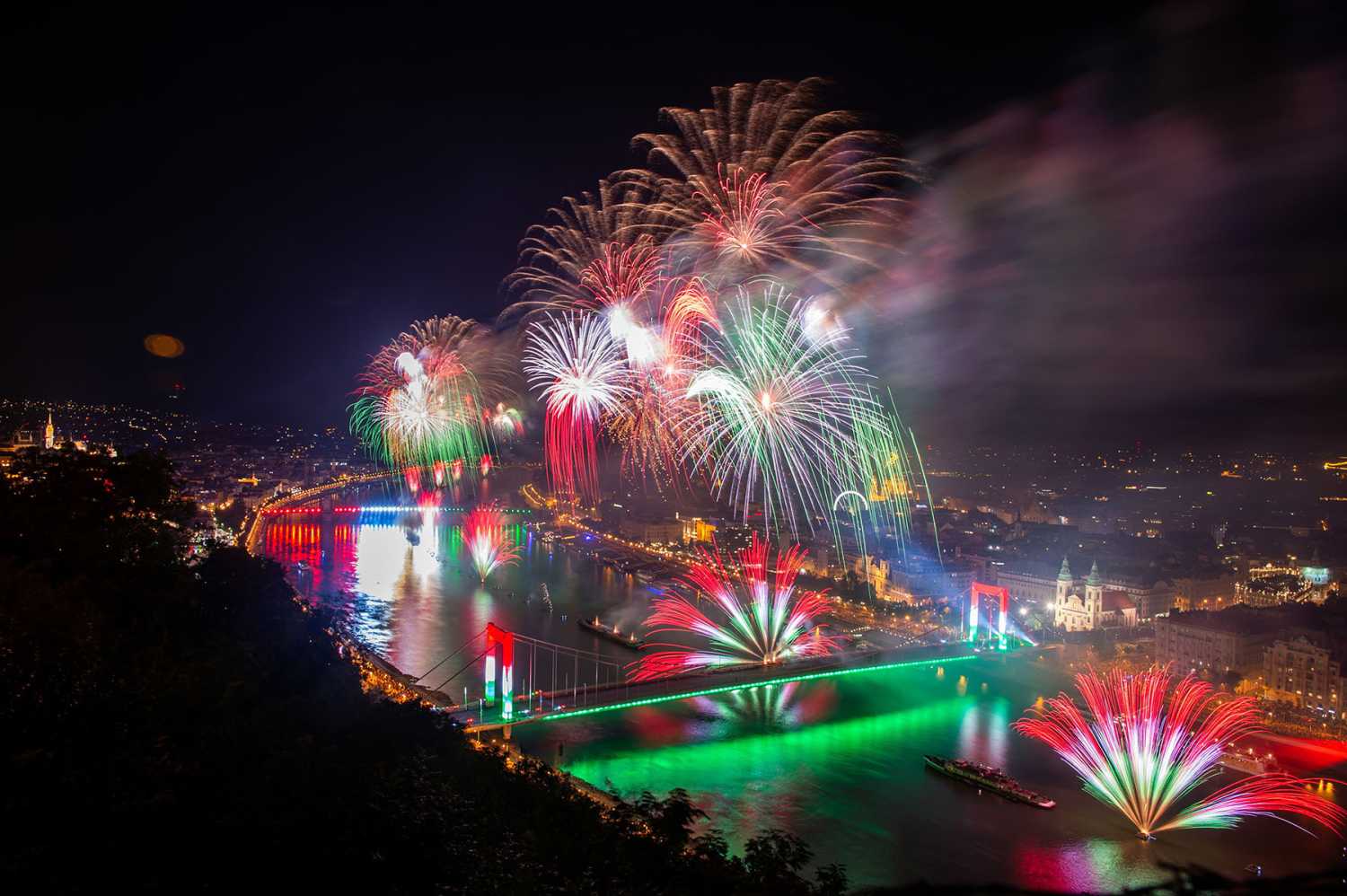Robe joins St Stephen’s Day spectacle
- Details

Multiple events were staged throughout the country’s vibrant and beautiful capital city on the day, with technical production - lighting sound, visuals, staging - for the 2023 event co-ordinated and delivered by the Visual Europe Group (VEG), working with 12 sub-companies.
The three main areas in which Robe fixtures were used were the riverside Road Movie Live concert stage with an all-action line up of top Hungarian artists running over three days of the holiday weekend; The Parliament Building, where Robe Fortes supported projections mapped onto the building’s impressive façade, and on the Elisabeth Bridge where more Robe Fortes were utilised to throw beams, colour and texturing from the bridge, across the water onto the riverbanks.
For Road Movie Live, a 20m-wide concert stage was erected at Műegyetem Rakpart with capacity for 15,000 people who enjoyed a line up including Tankcsapda, the Bagossy Brothers Company and Tamás Horváth.
The lighting production design was created by a tVEG team, explained account director Kristof Nagy, who created a scheme to provide “the best visual experience for all of the bands” who played during daylight and after dark.
Sixteen Robe BMFL Spots, 36 MegaPointes and 18 Tarrantula’s were prominent on this year’s rig, all chosen for their power, flexibility, and reliability, run via MA control.
The imposing 268m long Hungarian Parliament Building (AKA the Parliament of Budapest) is the seat of Hungary’s National Assembly, a popular landmark and tourist attraction in the city located prominently on the Pest side of the river. This neo-Gothic masterpiece was designed by Hungarian architect Imre Steindl and opened in 1902 and since then, it has been the largest building in Hungary.
The front façade projection mapping system was designed by the VEG Europe team who rigged 49 35K projectors across the opposite side river on the Buda banks, throwing a series of stunning images approximately 400 metres for the 35-minute show synchronised to music.
To augment and support the colourful and kinetic digital art being projected, 40 Robe Fortes were positioned on two levels, with some lights placed on the building’s numerous balconies and others along the ground in front.
Deployment of the Fortes involved luminaires being manually carried through the building, often via tiny winding passages and up and down steep and narrow staircases, a labour-intensive exercise that was “definitely worth the effort when we saw the results,” enthused Kristof.
Elisabeth (Erzsébet) Bridge was the third area to feature Robe products with 76 Fortes helping transform the bridge into a bold and beautiful visual feature for millions rocking up to see the main show live and to celebrate this seminal day in the country’s history.
The Fortes - with SelbyGuard rain dome covers - were positioned in lines both sides of the bridge and used to light its concrete pylons and steel supports. They were also used as beam and searchlight effects, again part of a design conceived by the same VEG Europe team involved in all the main events in and around the city.
All these St Stephen’s Day installations were generator powered, with a large Riedel MediorNet system utilised for integrating lighting video and sound data signals together for the time coded main show. The network stretched 4.5km along the riverside site and included a large fibre circle embracing both sides, enabling signal / data to be sent from anywhere in between the Petofi Bridge at one end and the Margaret Bridge at the other.
The production build-up period around the city started seven days before the event and challenges for VEG included co-ordinating around 800 crew. The main show had only two technical rehearsals to co-ordinate all the elements across this vast space, which was broadcast live on Duna Televízió (TV Duna) and its online platforms.
It included two drone shows, one in the first 6 minutes and one in the last 6 minutes, in two different positions, each using 400 drones.
The show’s creative direction was by Centrum Production, who also produced the video mapped animations and other content as well as liaising with government departments about the symbols used and the narrative direction.












